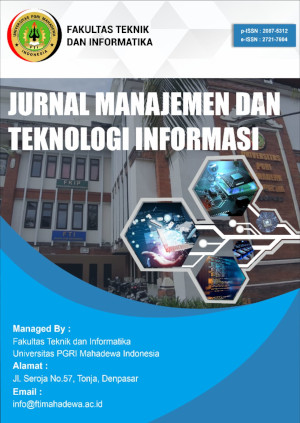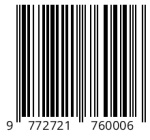PENGEMBANGAN VIDEO TUTORIAL BEBASIS JAGAT KERTI DAN FUN LEARNING UNTUK MOTORIK HALUS DAN KARAKTER ANAK USIA DINI
DOI:
https://doi.org/10.59819/jmti.v15i2.4941Keywords:
video tutorial, pendidikan anak usia dini, motorik halus, Jagat Kerti, fun learning, plastisinAbstract
Digital technology in classroom learning can enhance teachers’ instructional resources by providing access to diverse verbal and nonverbal presentation modes. In early childhood education, developing fine motor skills often presents a significant challenge. This study explores the effectiveness of video tutorials as visual communication media, integrating the Balinese cultural concept of Jagat Kerti (a principle of universal harmony) and an engaging learning approach to develop fine motor skills and promote character development in young children. The video activities involve shaping objects with plasticine and narrating the folk tale The Monkey and the Turtle. The media production process is divided into three stages: pre-production, production, and post-production. Observations showed that before watching the video, children could recognize shapes and colors but struggled to manipulate plasticine. After watching the video and receiving teacher guidance, the children successfully formed objects like apples and turtles and understood the story’s moral messages. Testing with a small group of young learners confirmed that this educational media is highly suitable as a learning tool for early childhood education.
Downloads
References
Antoniazzi, A. (2016). “Masha and the bear: A new educational paradigm”. Journal of Theories and Research in Education, 11(3).
Budiarta, I.W. (2020) “Kearifan Lokal Bali: Nilai-Nilai Jagat Kerti dalam Pendidikan Karakter”. Jurnal Pendidikan Karakter, vol. 10, no. 2, pp. 45–56 2020.
Buitrago, M., & Chiappe, A. (2019). Representation of knowledge in digital educational environments: A systematic review of literature. Australasian Journal of Educational Technology, 35(4).
Copple, C., & Bredekamp, S. (2009). Developmentally appropriate practice in early childhood programs serving children from birth through age 8. National Association for the Education of Young Children. 1313 L Street NW Suite 500, Washington, DC 22205-4101.
Hirsh-Pasek, K., Zosh, J. M., Golinkoff, R. M., Gray, J. H., Robb, M. B., & Kaufman, J. (2015). Putting education in “educational” apps: Lessons from the science of learning. Psychological science in the public interest, 16(1), 3-34.
Kemdikbud. (2022), “Panduan Implementasi Kurikulum Merdeka Jenjang PAUD”. Kementerian Pendidikan, Kebudayaan, Riset, dan Teknologi.
Luo, Z., Jose, P. E., Huntsinger, C. S., & Pigott, T. D. (2007). Fine motor skills and mathematics achievement in East Asian American and European American kindergartners and first graders. British Journal of Developmental Psychology, 25(4), 595-614.
Mayer, R. E., & Pilegard, C. (2005). Principles for managing essential processing in multimedia learning: Segmenting, pretraining, and modality principles. The Cambridge handbook of multimedia learning, 13, 316-44.
Mirsa, I Gusti Ngurah Rai. 1994. Wrehaspati Tattwa, Kajian Teks dan Terjemahan. Penerbit PT. Upada Sastra.
Monkeviciene, O., Autukeviciene, B., Kaminskiene, L., & Monkevicius, J. (2020). Impact of innovative STEAM education practices on teacher professional development and 3-6 year old children’s competence development. Journal of Social Studies Education Research, 11(4), 1-27.
Mutiah, D. (2015). Psikologi bermain anak usia dini. Kencana.
Palupi, AN (2020). Use of Manipulative Media as A Stimulation of Ability To Understand The Concept of Early Children's Age (ECRJ) , 3 (2), 41-57.
Plowman, L., & Stephen, C. (2007). Guided interaction in pre‐school settings. Journal of Computer Assisted Learning, 23(1), 14-26.
Rony, R., & Jariyah, S. A. (2020). Urgensi Pendidikan Karakter dalam Membentuk Akhlak Peserta Didik. Tafkir: Interdisciplinary Journal of Islamic Education, 1(1), 79-100.
Sandseter, E. B. H., Storli, R., & Sando, O. J. (2020). The dynamic relationship between outdoor environments and children’s play. Education 3-13, 1-14.
Sproull, N. L. (1988). Handbook of research methods: A guide for practitioners and students in the social sciences. Scarecrow Press.
Sugiyono, D. (2013). Metode penelitian pendidikan pendekatan kuantitatif, kualitatif dan R&D.
Susanto, A. (2011). Perkembangan Anak Usia Dini: pengantar dalam berbagai aspeknya. Kencana
Widagdo. (2011). Desain dan kebudayaan. Bandung: ITB Press.
Downloads
Published
Issue
Section
License
Copyright (c) 2025 Putu Gede Surya Cipta Nugraha, I Nyoman Agus Suarya Putra, Ni Wayan Wardani

This work is licensed under a Creative Commons Attribution-ShareAlike 4.0 International License.
Authors who publish with the Jurnal Manajemen dan Teknologi Informasi agree to the following terms:
1. Authors retain copyright and grant the journal the right of first publication with the work simultaneously licensed under a Creative Commons Attribution License (CC BY-SA 4.0) that allows others to share the work with an acknowledgment of the work's authorship and initial publication in this journal.
2. Authors are able to enter into separate, additional contractual arrangements for the non-exclusive distribution of the journal's published version of the work (e.g., post it to an institutional repository or publish it in a book), with an acknowledgment of its initial publication in this journal.
3. Authors are permitted and encouraged to post their work online (e.g., in institutional repositories or on their website) prior to and during the submission process, as it can lead to productive exchanges, as well as earlier and greater citation of published work. (See The Effect of Open Access) .





















